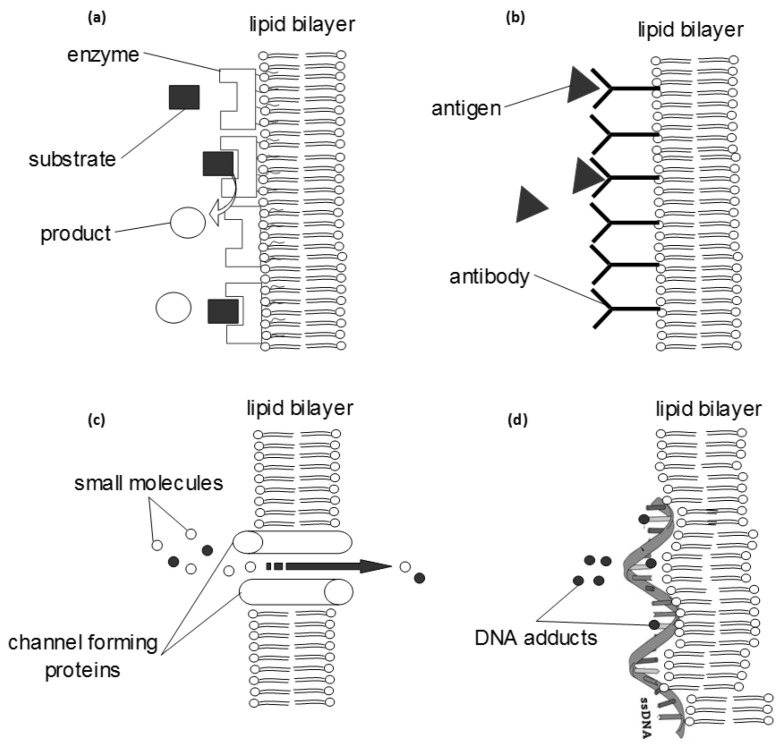Figure 3.
Some basic biochemical systems that can be reconstituted within an artificial lipid bilayer and further engineered into a diagnostic system (biosensor). The transduction of the biochemical information into a detector signal can be achieved with electrochemical, optical, piezoelectric or magnetic sensors. (a) bioaffinity interfaces can be constructed using enzymes or receptors, adsorbed on the membrane surface; the whole system can be optimized electrochemically (using redox amplifiers) or optically (using fluorescent tags). (b) The monitoring of immunochemical reactions follows similar methodology and further allows for the development of more advanced and rapid signal propagation systems (e.g., using enzymes, tagging or radiochemistry). (c) Many channel-forming proteins have been reconstituted within a bilayer; small molecules can flow through the channel, but in most cases some selectivity rules apply that make possible the development of a detection system (e.g., gramicidin channels transport potassium ions faster than sodium while valinomycin channels transport only potassium ions). (d) Single- or double-stranded DNA can adsorb on the membrane surface to investigate the effects of various adducts or to detect mutagens.

